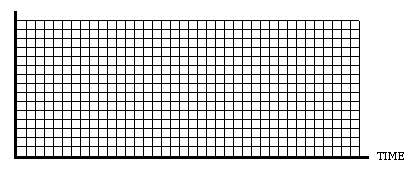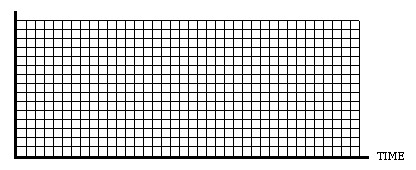Hands-On-Physics
Introductory Mechanics
Messing Around:
RUNNING
Measure multiple time intervals using "lap" timer to analyze the
motion of a person who first walks and then speeds up to a run.
Suggestions:
Choose a timer who will measure the time intervals of the runner. Set up
a course for the runner and position four signalers along the course to
signal the timer when the runner passes their location. One person at the
beginning of constant walk, one at the beginning of changing speed, one
at the beginning of constant run, and one at the end of constant run. Agree
on a signals for the person keeping time. Be sure to measure the distance
from start to the first signaler, and distances between signalers.
You could, instead, call start zero and measure the positions of
the timers with respect to zero.

Figure M.1
Runner Changing Speed
Make tables for recording your measurements, an example is shown below.
Tables are also helpful for keeping track of calculated values.

Figure M.2
Time & Distance Table
ANALYSIS:
To get a clear picture of the motion, several speed
calculations are suggested, and two graphs
are recommended. Time is generally plotted horizontally.
- Calculate the runner's constant walking speed.
- Calculate the runner's constant running speed.
- What about speed in the middle part of the journey?
- Plot a point for each time your runner passed a signaler. ( a position
vs. time graph.) You may want to make a table of values before you begin
plotting points.

Figure M.3 a
Runner's Position Graph
- Think out what the runner's speed was at each of those times and plot
a point on the graph for each of those times. (This is a speed vs. time
graph.)

Figure M.3 b
Runner's Speed Graph
Previous Page
|| Up a Level || Index
|| Next Page
